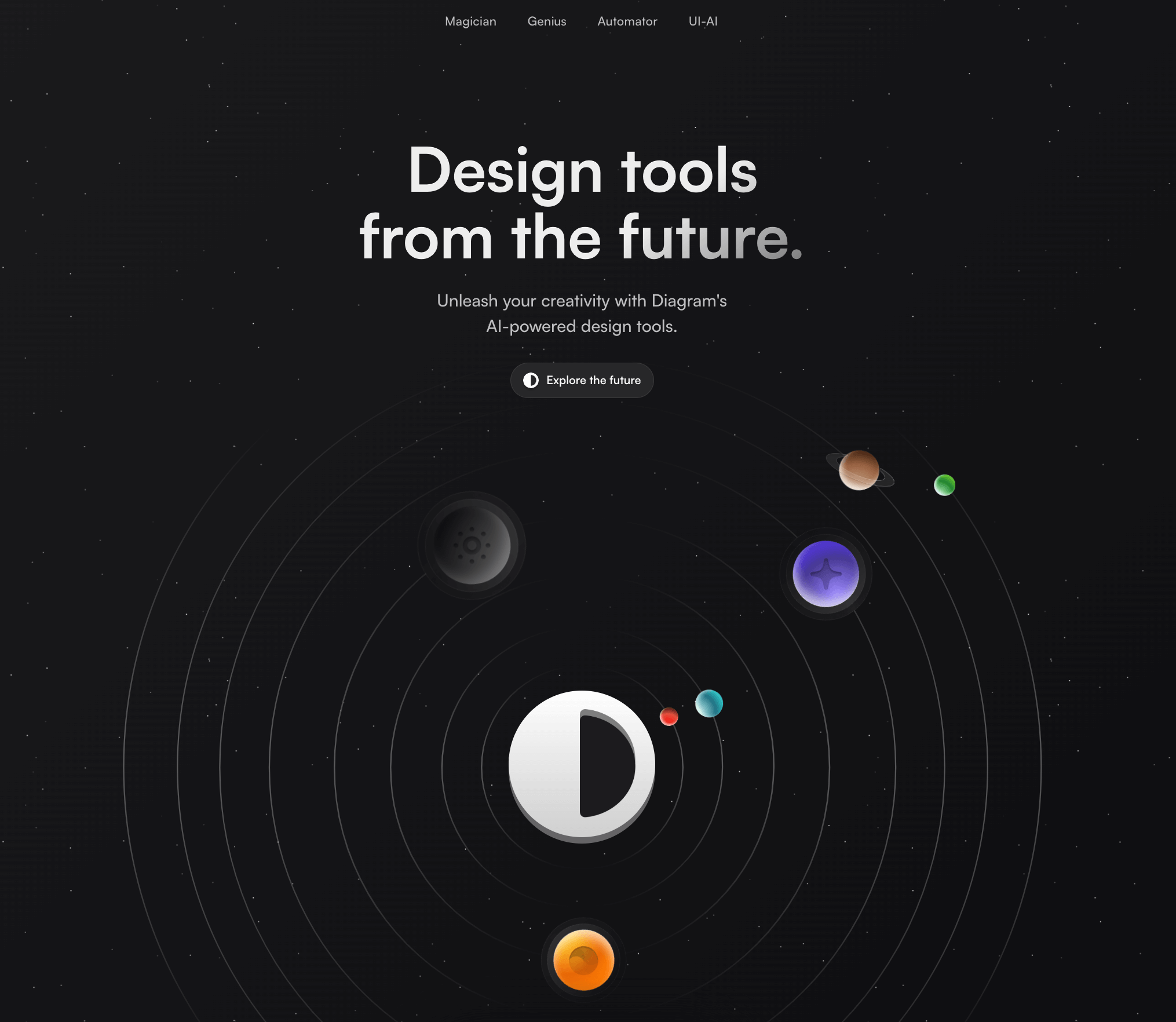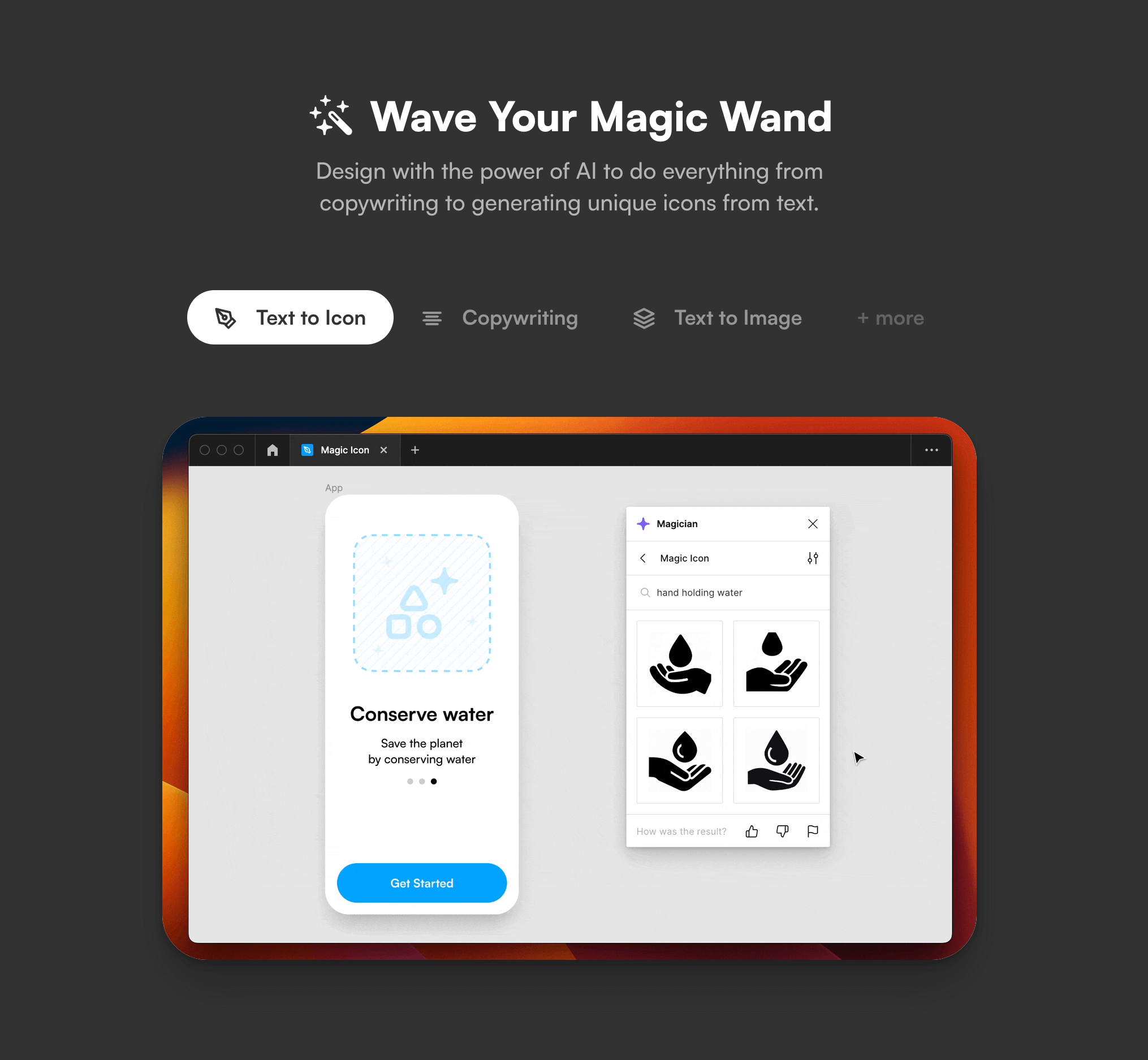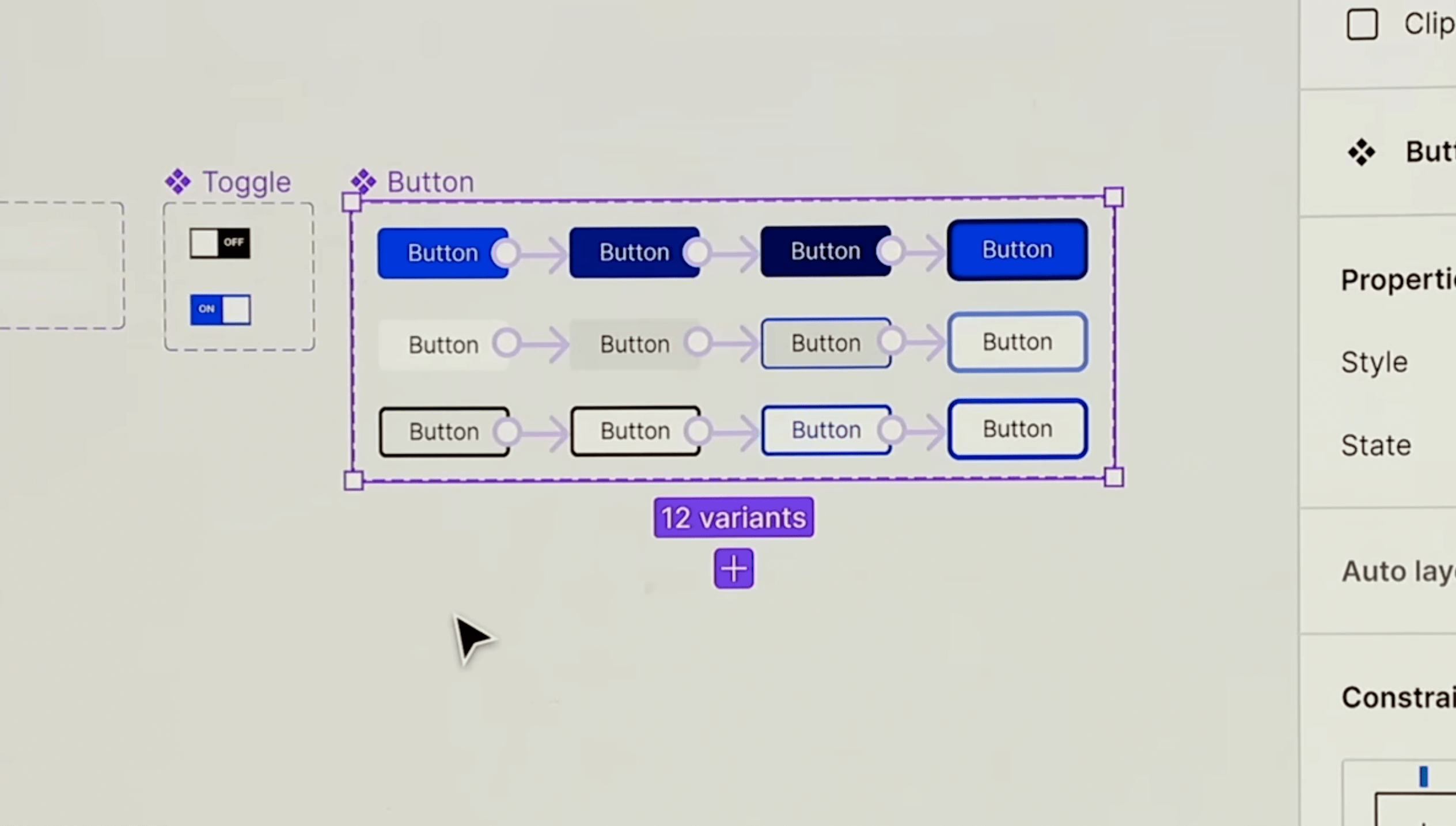
Cover generated by Midjourney. Prompt: Visual designers working with AI to develop creative software solutions.
This blog already offers a diverse collection around the topic of artificial intelligence (AI) from the various disciplines that work all under one roof at Centigrade. Of course, visual and ux design cannot be missing from this. In this blog post, I look at the current state and shed light on whether and how we visual designers at Centigrade are already harnessing the potential of AI. I ask myself and others how we envision a future symbiosis between our discipline and this technology. In this context, we will also talk about the current number 1 design and prototyping platform: Figma and how the platform plans to integrate AI into the design process in the future. What also concerns us: the democratisation of design and how this will also turn amateurs into “designers” with the help of AI.
I am a designer. I have little to do with writing, and unfortunately I have found that I do not have a deep hidden talent for it. Nevertheless, I would like to write this blog entry and share my research with you. So what am I doing? Sure – I get artificial intelligence (AI) to help me. As my colleague Marius put it so well: AI helps us visual designers especially with tasks we know little about. Like me, for example, in writing this article. This is true, but it also means that there are currently very few AI tools that can effectively support us UX designers in our demanding discipline. That’s why I’m not worried about AI taking my job. The tasks are too complex. During the design process, visual and ux designers juggle many requirements and tinker with various parameters: We solve challenging problems, we work in a user-centric way and focus on user needs, we fulfill expectation-compliant interaction paradigms and we enrich users with a competence experience. An AI cannot evaluate what you experience when you interact with a UI. This is another reason why it is unlikely to replace humans in the loop. At the same time, we respond to the needs and goals of our customers and sometimes have to make compromises. We understand and comply with technical requirements and ISO standards, we design inclusively. We present and discuss our screens, we communicate and justify design decisions, we learn and revise. Phew, quite complex – no AI can currently create such complex relationships.
My everyday work as a visual designer with the AI
I myself actively use AI technology, especially ChatGPT and DeepL Write, in my everyday work. The AI is a constant companion at the table to whom I can always ask questions and who always has an answer ready. It speaks every language, helps me find visual metaphors, synonyms and spelling mistakes. She explains the most complex things to me. And she does it when I want her to, as if I were back in fifth grade. Especially in the service sector, this support is extremely valuable. At Centigrade we work with international clients from the health, education, finance and industry sectors. The resulting diversity of disciplines, languages and cultures makes our work exciting and challenging. We are often confronted with issues that we had little knowledge of before. In order to design solutions and work on problems, it is important to delve deep into the subject matter. This is where AI provides valuable services. “Chat GPT impressively brings a solid domain understanding,” as Thomas noted in his blog post UX meets AI from March this year. But we have to be aware that whatever you put into an AI, it will spit out somewhere else. So we have to be particularly careful to keep our questions to them as general as possible, so as not to give away any of our customers’ information. One of my last questions to Chat GPT was: “Give me a brief description of the working environment in a modern laboratory and the conditions under which the laboratory staff work on the equipment there. As with me, conversational AI has become a tried and tested tool for many of my colleagues. It empowers us, giving us knowledge and support without us needing anything more than a computer and an internet connection.
How do we visual and ux designers imagine the symbiosis between our discipline and AI technology in the future?
Reid Hoffman, co-founder of LinkedIn and author of Impromptu, spoke in his talk The crescendo of AI in our collective Future at this year’s Figma Software Conference (Config 2023) of AI as a superpower for the brain.
“Artificial intelligence is amplification intelligence: it cultivates and amplifies our better selves. It takes the power of the human mind and makes it stronger and faster.”
Reid Hoffman at Config 2023
He compared the development of AI to that of the steam engine, which he described as a kind of superpower for muscles. With its development, things could be moved easily and sustainably that previously could only be set in motion and maintained with great effort. What superpowers will AI give us as visual and ux designers? Will it increase our speed with the mouse, allowing us to work faster and more accurately? Will it unleash our creativity to design something new, exciting and innovative?
Above all, I hope that AI will give me more time for my real profession (and passion), which is “solving problems in the most beautiful way”, as Aline Barré, our Head of Visual Design, so beautifully and aptly put it in her blog post Instructions for Digital Designers. As a designer, I want to and should embrace AI and integrate it into my design process. I want to take advantage of it and benefit from it. And like me, designers all over the world are trying to speak machine. Implementing AI in our daily work can relieve us of repetitive and time-consuming tasks. I envision AI taking over the drudgery like a Brownie, leaving us designers to focus on the activities reserved exclusively for human ingenuity.
“It frees us to focus on the things that only humans can do: spend a little bit more time than is strictly necessary, in order to end up somewhere unexpected.” John Maeda in Running up that hill: Creativity, AI, and the human pursuit of uphill thinking
This symbiotic collaboration between humans and AI can create a unique dynamic that gives us room for creative expression and time for bold design experimentation. With this in mind, I would like to take a look at Figma. Because it is precisely such design software tools for digital design professionals that have the potential to transform our workflow through the implementation of AI technology.
What is going on at Figma with AI?
Figma is a cloud-based design tool that allows teams to collaborate in real time on user interfaces and graphic projects. At Centigrade, we also use the software for most of our visual design and ux projects. At this year’s Config 2023, the company presented its vision for using AI on the platform. It was only in the early summer of 2023 that Figma acquired the AI software company Diagram. Diagram was founded at the end of 2021 to explore what it called ‘design tools from the future’. Prior to the acquisition, Diagram had already been very successful in developing plugins for Figma, such as Automator, which automates repetitive work processes in Figma without writing code.

Screenshots https://diagram.com/
With the acquisition of Diagram, Figma has announced a major AI update that could change the way we work with the design tool in the future. Will the introduction of AI in Figma finally give us designers the superpower Reid Hoffman talked about? The vision of the team around Diagram founder and CEO Jordan Singer is promising. At the Designing with AI (Config 2023) presentation, they explain to designers where we would like to see support. They present the Magician plugin, which is already in beta. It can generate icons based on short prompts. Magician also fills screens with appropriate photos, images and text on request.


Screenshots https://magician.design/
The highlight of the presentation is Genius, which Diagram introduces as “your AI design companion”. This is intended to integrate artificial intelligence technology into Figma in the future. The presentation showed how, by typing “add hover, pressed and focus states for each variant”, the different states were created by the AI – matching the styles of the other components.


Screenshots from Designing with AI (Config 2023)
Genius is capable of creating intelligent layouts and automatically making design suggestions. It does this by constantly analysing the way designers work and their preferences. It ensures that spacing, alignment and proportions remain consistent across screens and components, contributing to a consistent and efficient design. They went on to demonstrate how the AI analyses existing design patterns to make situational design recommendations. The presentation shows how Genius creates and presents different representations and arrangements of album covers as the designer works on a music app. Genius also uses the rich palette of Figma plug-ins. In the presentation he is asked: “Create a colour palette from these images, then create a style guide with 10 shades for each colour.” To do this, he intelligently combines two plug-ins: Image Palette and Foundation: Colour Generator.


Screenshots from Designing with AI (Config 2023)
It remains to be seen how this will develop. After all, Genius is not yet available. Once Figma makes the AI tool available to the masses, it will be exciting to see if and how these ‘superpowers’ actually change the way we work with the software.
Democratising design
In the field of visual and ux design, there are also other possible uses for AI that can be located in visual design, but are not directed at the designers themselves. I would like to touch on this briefly – simply because it is an important concern for me. Recently, my colleague David and I tested the Uizard Autodesigner. The company describes the tool as follows “Text to design is here! Generate editable, multi-screen designs from simple text prompts”. The company’s mission is to “democratise design to enable non-designers to create digital, interactive products”.

Screenshots Uizard Autodesigner
To do this, the software needs to know, in a maximum of 300 characters, what concept the desired design should have. The non-designer has a further 150 characters to describe the aesthetics of the digital product to be created. Of course, it is obvious that such short prompts cannot be used to create elaborate individual products. On the contrary, the “non-designer” would have to invest a lot of energy and time, depending on his talent and expertise, to work on the designs.
We should not underestimate the challenge of democratising design, i.e. making design tools and practices accessible to a wider mass. For us designers, but also for the “non-designers”. For the company using such tools, it may mean that they can do without the knowledge of experts. Of course, design is much more than the catalogue-like creation and arrangement of screens. It is a craft based on experience, study, experimentation, research, heuristics and iterative loops. The work of non-designers with such AI wizards, especially in a collaborative environment, can fuel false expectations and manifest visuals that neither meet the target audience nor the technical requirements, let alone the conceptual expectations. As a basis for discussion, such screens are therefore of limited use. At this point I would also like to speak for the non-designers. For the pressure to deal with design issues because such tools make it possible and promise a quick entry into the craft can certainly be overwhelming for people who are not designers and do not see themselves as such.
Conclusion
In the field of visual and ux design, it is clear that, despite promising approaches, there are currently only limited options for freeing designers from time-consuming tasks so that they can devote more time to demanding and creative design challenges. Much is still in beta. It remains to be seen how this will develop. Once Figma implements the AI tools, it will be exciting to see if and how these “superpowers” will actually impact the way visual designers work and produce results – I’m curious!
Links:
https://www.centigrade.de/en/blog/ux-meets-ai-can-designers-and-their-ideas-still-be-saved/
https://config.figma.com/video-on-demand/6330286715112 https://www.centigrade.de/en/blog/digital-designers-manual-how-to-lead-stubborn-digital-designers-to-drive-them-to-excellence/
https://howtospeakmachine.com/
https://www.figma.com/blog/ai-the-next-chapter-in-design/
https://www.figma.com/blog/uphill-thinking/
https://config.figma.com/video-on-demand?slug=6329924726112
https://www.linkedin.com/posts/figma_figma-acquires-diagram-activity-7077699980509016064-v-ct
https://diagram.com/
https://diagram.com/#automator
https://uizard.io/autodesigner/


